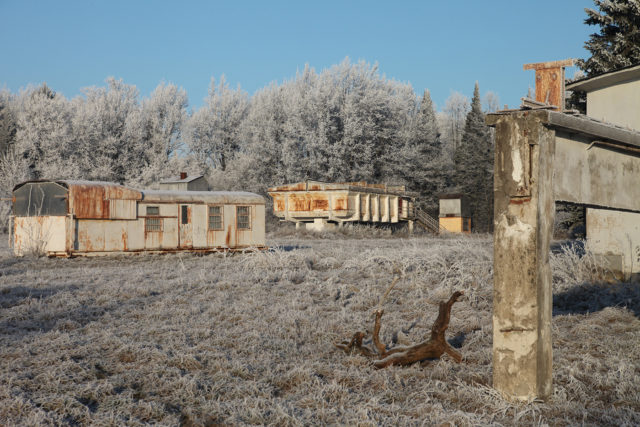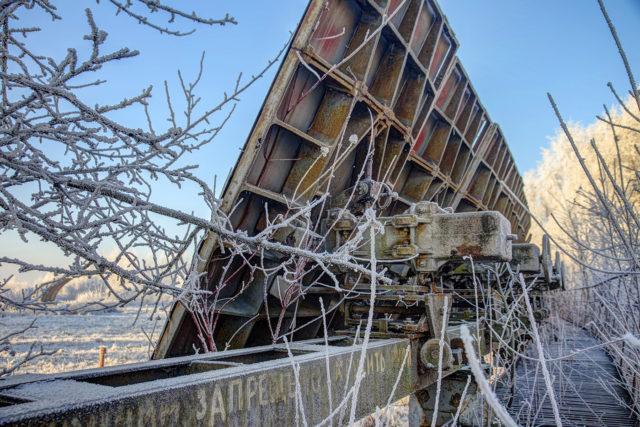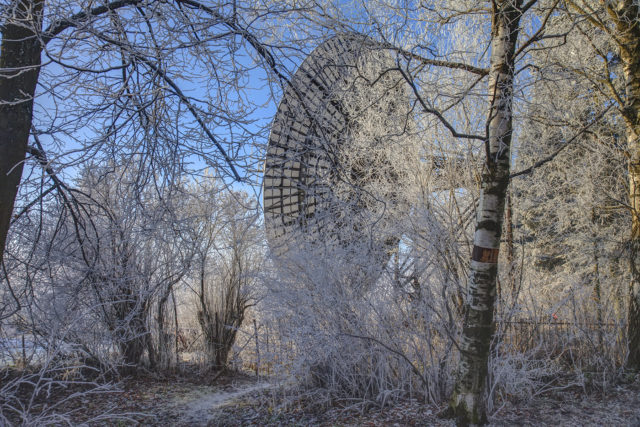In 1827, Emperor Nicholas I approved the creation of a new astronomical observatory. It wouldn’t be as big as the one in St Petersburg – the St Petersburg’s Academic Observatory, but the Russian Academy of Sciences wanted a different location outside of the city which would offer better conditions for astronomy.
A commission was set up to look for a suitable location for the observatory. The place they chose was on the top of Pulkovo Mountain, 19 kilometers (almost 12 miles) south of the city center of St Peterburg.
After a site had been chosen, a committee of academics was formed in 1833 to develop the project further. The chairman of this commission was Admiral AS Greig who had already built an observatory in Nikolaev.
The design of the observatory was entrusted to the Russian architect Alexander Bryullov. Construction began in June 1835, and the official opening took place in August 1839 under the guidance of the astronomer Freidrich Georg Wilhelm von Struve, who was the first director.
The total cost of the observatory by the time it was completed was estimated at 2,100,500 rubles (approximately 33 million US dollars in today’s money).
Initially, the observatory consisted of a main building with three towers and two residential houses for the astronomers. At its inception, eight people worked at the observatory with four astronomers working alongside Struve.


The main areas of work undertaken at the observatory included the positioning of stars, astronomical parameters, refraction in the atmosphere, and studies on binary stars. It also created accurate star catalogs for several years between 1845 and 1930.
However, the observatory also carried out geological studies of Russia to help in developing navigation aids. The Pulkovo Meridian, which passes through the center of the main building, was used as a longitudinal point of reference on all Russian maps of that time.
In 1857, the observatory staff increased to 13 people. As well as the director, there was now a vice-director as well as both senior and associate astronomers and a scientific secretary.
When an observatory was built in Lisbon in the second half of the 19th century, the employees working there had been trained at the Pulkovo Observatory.
Even the Lisbon building itself was based on the Pulkovo Observatory, and Struve was the main consultant.
In 1884, the Pulkovo Observatory Museum was founded, which exhibited more than 100 astronomical instruments.
This included a Merz and Mahler refractor used at the observatory; it was the largest refractor in the world at that time, with the diameter of the lens measuring 15 inches (380 mm).
The 15-inch lens was no longer in use at the observatory at that time the museum opened since a new one, measuring 30 inches (760mm), was installed in 1878.
It was, for ten years, this second lens was the largest refractor lens in Europe.
In 1894, the Pulkovo Observatory also obtained an astrograph, allowing the researchers to photograph the night sky, stars, and celestial events.

In 1913, an asteroid was named after the Pulkovo Observatory when it was discovered by Grigory Neuimen at the Simeiz Observatory, a branch of the Pulkovo Observatory.
At the beginning of World War II, many of the buildings were destroyed in air raids as the Germans targeted the observatory. Luckily, many of the most important pieces of equipment were saved as well as a significant number of library books.
Some of the observatory’s employees went to the front, while others were evacuated to the Tashkent Observatory and Alma-Ata, where the Institute of Astronomy and Physics was later founded in 1941.
After the war, a decision was made to restore the observatory. Consequently, Pulkovo Mountain was cleared and the construction of new buildings began under the leadership of the architect Shchusev who referred to archival records relating to Bryullov’s previous designs.
In 1954, the observatory reopened its doors, this time with a greater number of both measuring instruments and specialists.
In addition, several new departments were established, such as the radio astronomy department.
It took until 1967 before the museum was fully restored, although it had been operating during that time. Many exhibits were lost during the war, but modern-day visitors can still see computing equipment, telescope optics from the 19th and 20th century, astronomical clocks, and portraits of astronomers from the past.
In 1990, the Pulkovo Observatory was declared part of the UNESCO-protected site known as the Historic Center of Saint Petersburg and Related Groups of Monuments.
In 1998, a presidential decree ensured that the observatory was included in the State Code of Especially Valuable Objects of Cultural Heritage of the Peoples of the Russian Federation.


In 1945, a protective park zone of 3km (1.8 miles) was established around the observatory so that no industrial or large housing projects could be undertaken nearby.
Any construction that did occur had to be carried out in accordance with the Directorate of the Pulkovo Observatory.
However, in October 2016, the new director of the Pulkovo Observatory had entered into an agreement for substantial building works in the protected zone.
When it came to light, many opposed such a development and in January 2017, the Federal Agency for Scientific Organizations announced that such approval was illegal.
The future of the Pulkovo Observatory is uncertain. At the time it was built, it was a perfect location. However, as St Petersburg has grown, the sky around the observatory is suffering from increased light pollution.
In addition, vibrations from the higher volume of heavy traffic nearby create interference with the delicate readings undertaken within the observatory.
As such, despite initial opposition, the Presidium of the Russian Academy of Sciences decided that the astronomical observations undertaken by the Pulkovo Observatory would be gradually transferred to other observatories that had more favorable astroclimatic conditions over a period of five years.

In 2018, the observatory employed 282 people. The observatory is open to the public and conducts tours and talks. It is estimated that about 15,000 people visit annually.
The pictures below are of the abandoned pavilions on the site of the Pulkovo Observatory. There is also an unfinished telescope at one of these pavilions.
It is not known why the pavilions were abandoned, but with the observatory’s work being slowly taken away from it as the city of St Petersburg continues to grow, these pavillions seem like a sad premonition of what is to come.
The photographs below were taken by Philipp Chistyakov and a huge thank you to him for providing to us amazing photos. He lives in Russia and has got the fantastic photostream in his Flickr account. Check it out via this link.
















Abandoned: One of the Most Unique Homes in Saint Petersburg

